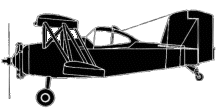
ASN Wikibase Occurrence # 213719
This information is added by users of ASN. Neither ASN nor the Flight Safety Foundation are responsible for the completeness or correctness of this information.
If you feel this information is incomplete or incorrect, you can submit corrected information.
| Date: | Saturday 10 July 1971 |
| Time: | 08:20 |
| Type: |  Grumman G-164A Ag-Cat |
| Owner/operator: | Cropcair Aviation Pty Ltd |
| Registration: | VH-PUQ |
| MSN: | 423 |
| Fatalities: | Fatalities: 0 / Occupants: 1 |
| Aircraft damage: | Substantial |
| Location: | Archerfield Airport, Brisbane, QLD -
 Australia Australia
|
| Phase: | Landing |
| Nature: | Agricultural |
| Departure airport: | near Dayboro, QLD |
| near Dayboro, QLD | |
| Investigating agency: | BASI |
| Confidence Rating: |
The aircraft was taking off into the south, from a one-way agricultural strip situated along the spine of a mountain ridge. The length of the strip was 1,420 feet. The surface of the strip was generally good but over the last 200 feet at the southern end a number of flat boulders protruded up to 3 inches above the soil and there was a transverse downslope of about 9 degrees to the left. Twenty-six take-offs had been made from the strip at slightly below the maximum take-off weight for the aircraft type. On the twenty-seventh take-off, the aircraft lifted off normally then sank and touched the ground in the area which contained the boulders. The pilot heard a loud 'crack'. He continued with the flight and after spreading the fertiliser established at the left main landing assembly had broken away from the aircraft. He then flew to Archerfield and landed on a prepared grass surface. As the speed decayed the left lower wing-tip and the propeller contacted the ground. The aircraft skidded 87 feet and swung to the left. The tail rose and the aircraft came to rest balanced on the propeller, the right wing-tips and the right main wheel. Subsequent examination of the failed leg showed that fatigue cracks had initiated at fretting damage in the decarburised skin. A number of cracks propagated and joined to form a single crack 1 1/8 inches long by approximately 0. 050 inches deep. It is considered likely that cracks up to 0.050 inches deep were present when the 5,000 landing inspection was carried out on the leg some 150 landings prior to the accident.
Accident investigation:
 |
|
Sources:
https://www.atsb.gov.au/publications/investigation_reports/1971/aair/aair197100020/
https://www.atsb.gov.au/media/24591/197100020.pdf
Revision history:
| Date/time | Contributor | Updates |
|---|---|---|
| 28-Jul-2018 11:35 | Pineapple | Added |
| 31-Dec-2019 16:25 | BEAVERSPOTTER | Updated [Cn] |
| 07-Jun-2022 21:18 | Ron Averes | Updated [Location] |
Corrections or additions? ... Edit this accident description
The Aviation Safety Network is an exclusive service provided by:


 ©2024 Flight Safety Foundation
©2024 Flight Safety Foundation